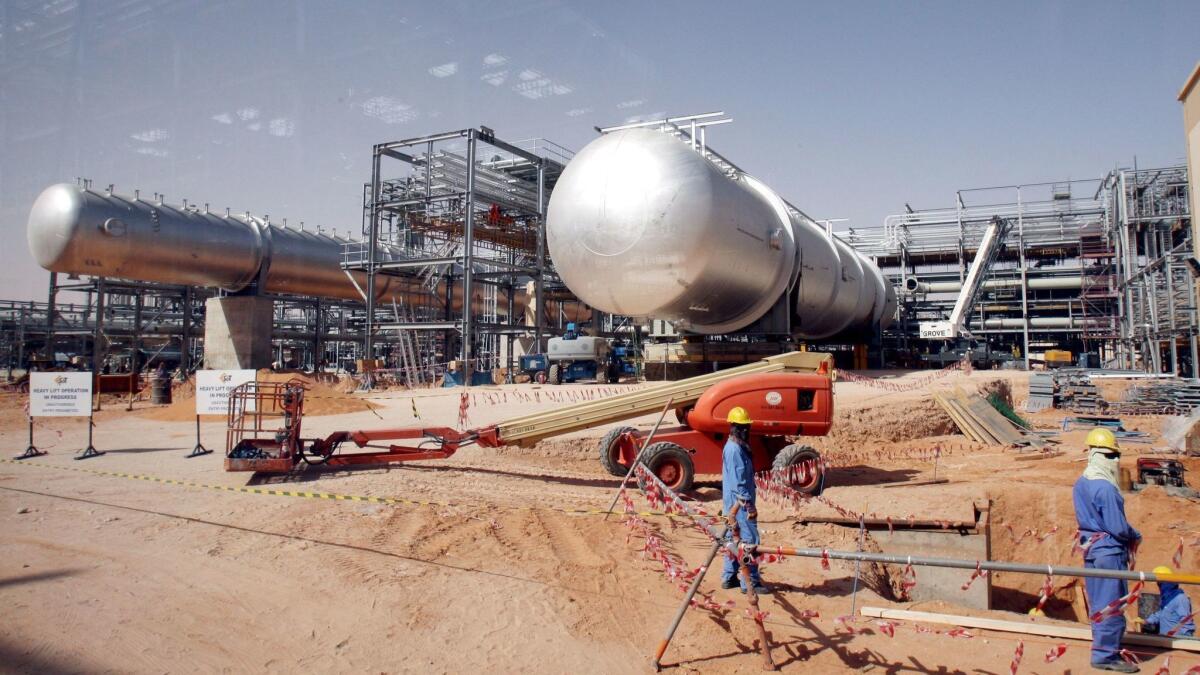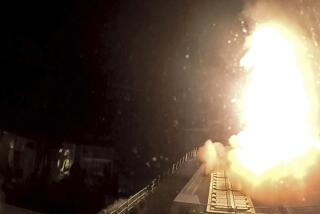Saudis escalate oil price war with huge output hike; Russia follows

Saudi Arabia escalated its oil price war with Russia on Tuesday as its state-owned company pledged to supply a record 12.3 million barrels a day next month, a massive increase to flood the market.
The supply hike — more than 25% higher than last month’s production — puts Aramco above its maximum sustainable capacity, indicating that the kingdom is even tapping its strategic inventories to dump as much crude on the market as quickly as possible.
Moscow responded within minutes, with Energy Minister Alexander Novak saying Russia had the ability to boost production by 500,000 barrels a day. That would put the country’s output potentially at 11.8 million barrels a day — also a record.
“There is a significant amount of market posturing going on between Saudi Arabia and Russia,” said Jaafar Altaie, managing director of Abu Dhabi-based consultant Manaar Group. “They’re both getting ready to fight a pretty aggressive price war.”
It was the latest maneuver in what’s set to be a long and bitter conflict between the two former allies. Other members of the Organization of Petroleum Exporting Countries followed in their wake, with Iraq saying it would cut prices and increase shipments by as much as 350,000 barrels a day next month, and Nigeria adding about 100,000 more.
The market is confronted with an unprecedented situation — a huge supply surge combined with a historic demand slump from the coronavirus. On Monday, crude slumped almost 25%, the largest one-day drop in almost 30 years, creating mayhem in global equity and bond markets.
Oil prices rebounded Tuesday, advancing alongside a broader rally in global markets. U.S. crude rose 10.4% to $34.36 a barrel.
The United States, meanwhile, ramped up its response to the market-share war as the collapse of the OPEC+ alliance threatens the American shale industry.
The U.S. suspended a planned sale of 12 million barrels of oil from the nation’s emergency reserves. President Trump also spoke with Mohammed bin Salman by phone before the Saudi crown prince increased his nation’s oil production, according to two people familiar with the call.
The outcome of the price war will be determined by each side’s ability to inflict damage, but also their ability to absorb it.
Saudi Arabia has greater offensive capabilities, thanks to about 2 million barrels a day of idle production capacity. Riyadh can also use its strategic oil stocks to boost supplies on very short notice, according to people familiar with its strategy. On top of domestic stockpiles, it also stores crude near consumption hubs in Rotterdam, Netherlands; Okinawa, Japan; and the Egyptian port of Sidi Kerir. Russia doesn’t have a network of strategic oil stocks to match.
Russia may have the defensive advantage. The Kremlin can dip into its $150-billion wealth fund to offset the slump and bolster the ruble. Those reserves are sufficient to cover lost revenue “for six to 10 years” at oil prices of $25 to $30 a barrel, the Finance Ministry said.
In Saudi Arabia, if Brent crude remains at $35 without an adjustment in government spending, the kingdom would run a deficit of nearly 15% of economic output in 2020, while its net foreign reserves could run out in about five years unless it uses other funding sources, according to Abu Dhabi Commercial Bank.
For decades, the oil market has been largely regulated. First by Americans, who set production quotas for their companies through the Texas Railroad Commission in the first half of the 20th century, and later by the OPEC cartel. Through that time, Texas and later OPEC acted as swing producers, upping output at times of scarcity and reducing it at times of lower demand, to keep prices stable.
“Welcome to the free market,” said Bob McNally, founder of consultant Rapidan Energy Group and a former White House official. “The world is about to learn very swiftly how important a swing producer is for stability, not only for the global oil market but the broader economy and geopolitics.”
With oil demand rapidly falling due to the economic impact of the coronavirus epidemic, the Saudi production hike, followed potentially by another one from Russia, is likely to force companies to store crude rather than process it. Traders are already seeking out tankers to store the glut.
The International Energy Agency said this week that global oil demand will shrink this year for the first time since the global financial crisis in 2009.
The U.S. and other Western countries are starting to worry about the oil price war between two of the world’s most powerful petroleum nations. On Monday, the U.S. Department of Energy denounced in a rare statement “attempts by state actors to manipulate and shock oil markets.”
Even as he responded in kind to the Saudi escalation, Novak reiterated his position from last week’s failed conference: Russia hasn’t closed the door on cooperation with OPEC.
In the final moments of last week’s gathering, the minister made a point of reminding fellow producers that Moscow was still prepared to continue its existing output cuts until the middle of the year. The alliance’s next meeting remains scheduled for June 9 and 10, but Novak said Tuesday that it could actually take place earlier, in May.
Other countries in the network, such as Algeria, Nigeria and the United Arab Emirates, have signaled that reconciliation may be a better way forward, as the impact of last week’s acrimonious split on the market becomes clear.
More to Read
Inside the business of entertainment
The Wide Shot brings you news, analysis and insights on everything from streaming wars to production — and what it all means for the future.
You may occasionally receive promotional content from the Los Angeles Times.










